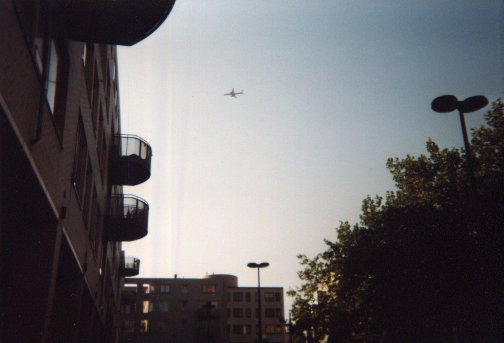


A'dam ZO, as its rather ominous abbreviated name runs, is synonymous with the "Bijlmer", which in turn is almost synonymous with the prison - "Bijlmerbajes" - located there. Ordinary citizens living in that area will never get a glimpse of that place; but they will have their houses burgled and possibly be knifed if they go outside late at night. That is the nightmare that the original architectural dream of creating the ultimate suburb turned into. And was it all that hard to predict? Every suburb is a nightmare. Stack people together in a kind of beehive, and that is what you get. The area known as "de Bijlmer" was planned as a collection of high-rise apartments with ultra-modern glass-encased entry passages and spacious parks in between. Using a lot of glass is asking for broken windows, and putting trees in between buildings higher than the trees is to visually reduce them to something fake and plastic-looking. The earlier buildings were even alphabetically numbered, like parking spaces, and given names that started with their letter, like Kraaienest and Ganzehoef, and transportation was taken care of by the "metro" lines running from one end of the area to another. Strangely enough, no one wanted to live in these dream homes, so their prices fell and their main inhabitants, when they were inhabited at all, were people at the bottom of the social hierarchy: students, poor people, illegal immigrants. An accident that was waiting to happen and might have been prevented, when one of the many aeroplanes flying over the Bijlmer to Schiphol finally crashed into one of these buildings (think September 11th, but with less victims due to a less ridiculously high building, and a government embarrassedly trying to ignore it, rather than hysterically exploiting it) brought to light countless illegal immigrants from Ghana; an accurate death count was not possible, as it was unknown how many people had lived there in the first place. Precisely because the Bijlmer was such a ghetto, reports of helmeted white-suited figures investigating the ruins after the accident were waved away. Many survivors reported ill with vague symptoms, however, and it transpired that the aeroplane, which was from El Al, had been defective, had been carrying some sort of dangerous substance, might have saved many lives by making a crash landing in a field somewhere, and had nevertheless continued its journey to Schiphol after an engine blew because the pilot had been ordered to continue flying, presumably because, if a crash landing had been made outside Schiphol, Dutch salvagers would have discovered whatever was aboard the plane that clearly El Al, and possibly the Israeli government, didn't want foreigners knowing about. A very nasty affair, and one that shows just how the Bijlmer is thought of: 'thank god the plane only fell on the slum, and didn't kill any real people'. Planes coming in to land at Schiphol still fly over the Bijlmer.
Having emphasized what an architectural nightmare the Bijlmer is - as a child I was taken there for visits to a grandmother, another one of those social categories easily relegated to the slum - I've photographed only the area of it that is quite bearable, and that, unsurprisingly, surrounds a train station. Architects have learned, and made a pleasant little three-storey apartment block close to "station Bijlmer" that is relatively safe to live in and close to the only non-gloomy shopping centre in the area, which also boasts that architectural achievement, the "ING-gebouw"; the bank called ING has buildings all over Amsterdam, but this one was deliberately designed to be aesthetically pleasing both inside and out, to, as it were, invite the employee to work. I've only seen the outside, but it is something special.
Bijlmer station: this station runs alongside a road and dips under it. The road has a bus stop; the station has a railway and metro track and leads railway passengers safely under the road to the square leading to the shopping centre, with nothing more dangerous to cross than a cyclist track.
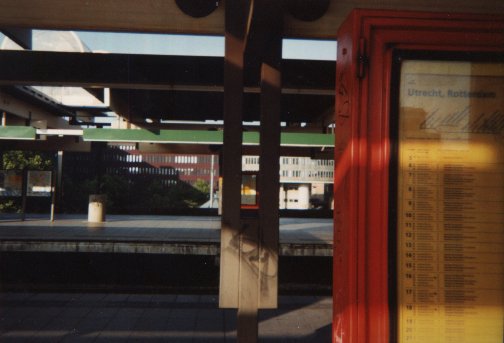
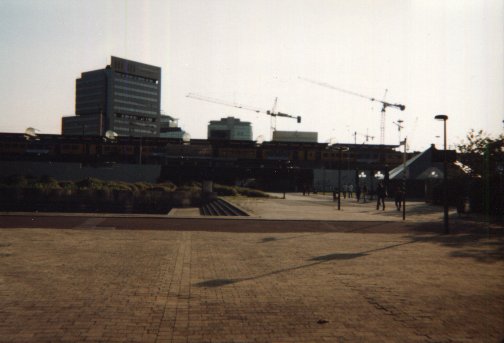
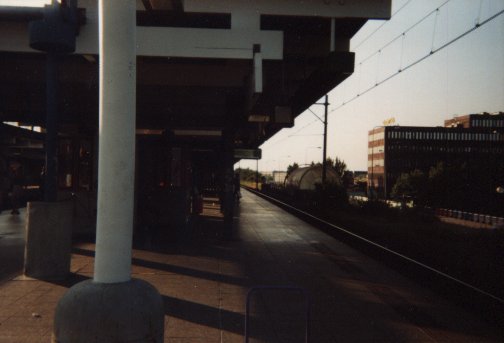
The shopping centre on one side of the station looks inviting. The buildings on the other side do not.
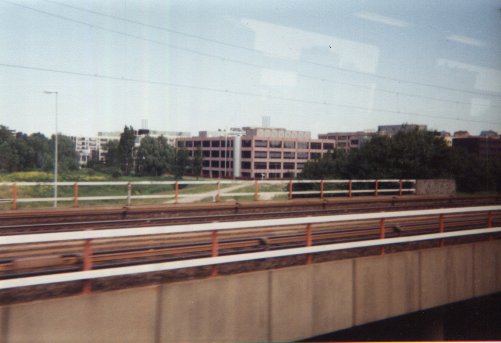
The famous ING-gebouw. it isn't rectangular, but spreads a bit at ground level, like a sprawling castle.
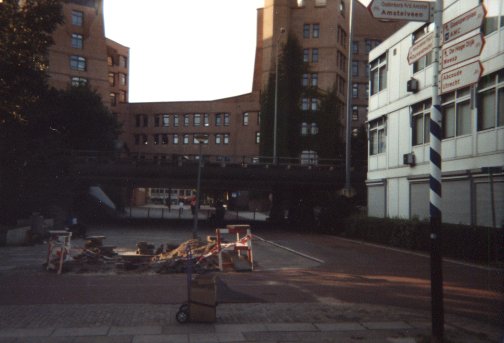
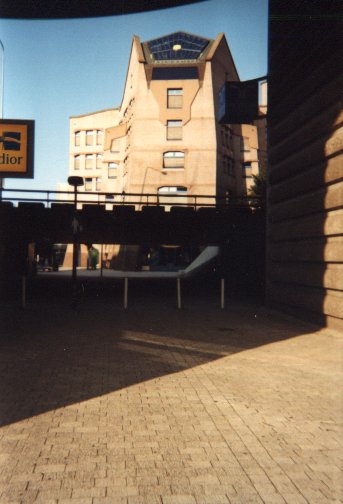
A kind of side entrance for people who want to bypass the shops and go straight to the three-storey apartment block. The blue signpost completely to the left directs the visitor to the right building.
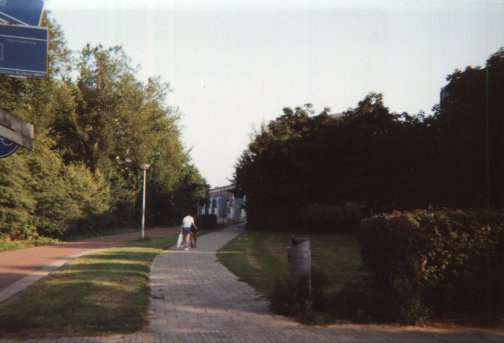
An older building in the real Bijlmer style.
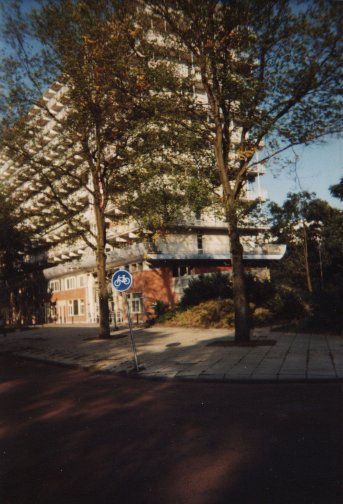
Is it a bird? Is it a plane? It's not Superman, I can tell you. Just another one of those planes flying low over a densely populated area because there's 'no real risk' (to people who matter, that is).
